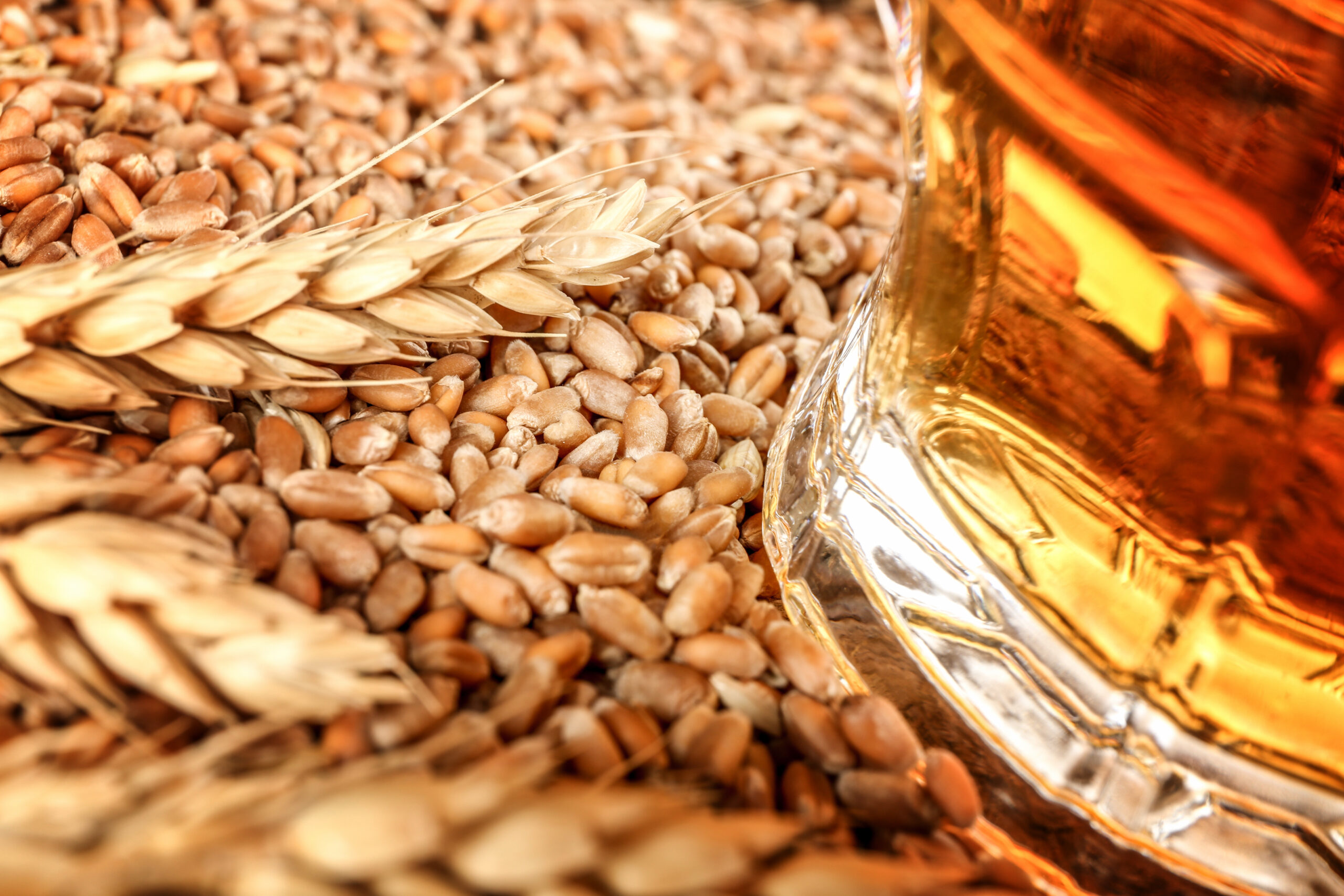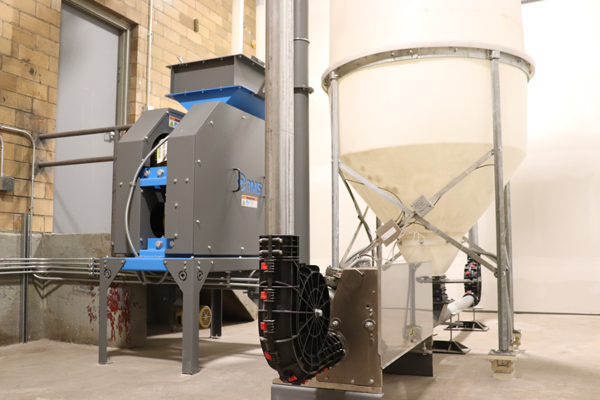Definition of Brewhouse Efficiency
During the brewing process, crushed malted barley is combined with water creating “mash”. This is done in a stainless steel tank referred to as the mash tun. The mash tun then holds the mash at a set temperature for a set amount of time while the starches in the malted barley are converted into the sugars that are used to create the beer.
 Ideally, 100% of those potential sugars are collected, but due to the intricacies of the brewing process, that is not always the case. When talking about “mash efficiency”, we are referring to the percentage of the sugars extracted from the malted barley. Higher efficiency reduces grain costs by minimizing wasted grain.
Ideally, 100% of those potential sugars are collected, but due to the intricacies of the brewing process, that is not always the case. When talking about “mash efficiency”, we are referring to the percentage of the sugars extracted from the malted barley. Higher efficiency reduces grain costs by minimizing wasted grain.
The closer we get to extracting 100% of the sugars, the more efficient we are. This percentage of sugar or target sugar content is also known as “gravity”. Each brewer and type of malted barley has a set potential gravity that they are looking to achieve and put into the fermentation process. Gravity is used to help measure brewhouse efficiency.
Factors That Influence Brewhouse Efficiency
There are two types of efficiency when it comes to brewing beer: mash efficiency and brewhouse efficiency. Brewhouse efficiency relates to the efficiency of the overall system. Mash efficiency relates to how much of your total overall sugar content makes it from the mash tun to the boil kettle. Mash efficiency is recipe-driven. Each style of beer requires a different sugar content and thus a different gravity.
What Is Considered an Efficient Brewhouse?
It is extremely difficult—practically impossible—to get to 100% efficiency. An efficient brewhouse is a brewhouse that is able to collect 80-95% of the sugars from the mash tun. The more efficient a brewhouse is during this process, the less money they proportionally spend on grains, and the more profit they make in the long run!
How to Calculate Brewhouse Efficiency
Calculating extract efficiency is essential for any brewery. It’s important to know your brewhouse efficiency so you can better improve your processes and get the best ROI. Brewer’s Friend offers a great brewhouse efficiency calculator, but there are many other useful sites.
A brewhouse efficiency calculator essentially measures the original gravity (potential gravity of grain) against the actual gravity (or final gravity) of the grain. For example, if a base malt has an original gravity of 1.032 (in which 32 would be used as the potential gravity score), but the final gravity measured is 1.028, then the efficiency would be 28 divided by 32, which gives us about 87% efficiency.
In this example, because the final gravity was close to the original gravity, this brewhouse would be considered efficient.
Increasing Your Brewing Efficiency
 Various equipment—such as a roller mill for brewing—can affect efficiency. A finer, more consistent crush from a roller mill allows more sugar to be pulled from the malt and barley. Roller mills that are not as consistent or fine in crushing grain do not allow for as much sugar to be pulled, resulting in lower efficiency.
Various equipment—such as a roller mill for brewing—can affect efficiency. A finer, more consistent crush from a roller mill allows more sugar to be pulled from the malt and barley. Roller mills that are not as consistent or fine in crushing grain do not allow for as much sugar to be pulled, resulting in lower efficiency.
It’s essential to have a well-balanced and repeatable grind where some of the barley is finely milled and some is larger. A quality sieve set helps evaluate this mill distribution. Any inconsistencies in your “grist” (milled barley) will negatively affect your brewing efficiency and your ability to properly extract sugars from the malt, which can result in larger discrepancies between original gravity and final gravity.
2 Roller vs. 4 Roller Mill: Which Is Better for Brewhouse Efficiency?
A two-roller mill has two rolls used to crush the grain. This type of roll configuration creates a consistent mill and allows for a good distribution of grain sizes. This is a base roller mill option.
A four-roller mill has two sets of rollers. The additional two rollers create a finer grist, while still delivering consistent results. Four-roller mills offer more control and options for milling barley. Once the right level of milling has been achieved, that level can be set for future use. Lastly, four roller mills make it easier to separate the “sugar water” (also known as “wort”) from spent grain in a process known as “lautering”.
When RMS Roller-Grinder tested the two-roll mills next to the four-roll mills, there was a 4-6% increase in efficiency. However, when a four-roll RMS roller mill replaced a competitor’s roller mill, there was as much as a 10% increase in efficiency.
However, there is more involved than simply roller mills when it comes to brewhouse efficiency. Poor brewhouse layout and long hoses also play a factor in inefficiencies, as can inaccurate measuring of losses and sparging the mash too fast.
The Benefits of High Brewhouse Efficiency
As a final breakdown, the benefits of high brewhouse efficiency include:
- Less money spent on grain
- Higher ROI
- Better quality beer
- Less waste
Keep these benefits in mind when considering whether it’s time to upgrade to a high quality roller mill.
Contact Us to Get More Consistent Efficiencies
The team at RMS Roller-Grinder prides itself on creating the industry’s most efficient and consistent roller mills to keep final gravity as close as possible to original gravity. Whether your brew includes pale malts or brown malts, when you are ready to improve your brewing equipment and brewhouse efficiency, contact us!
